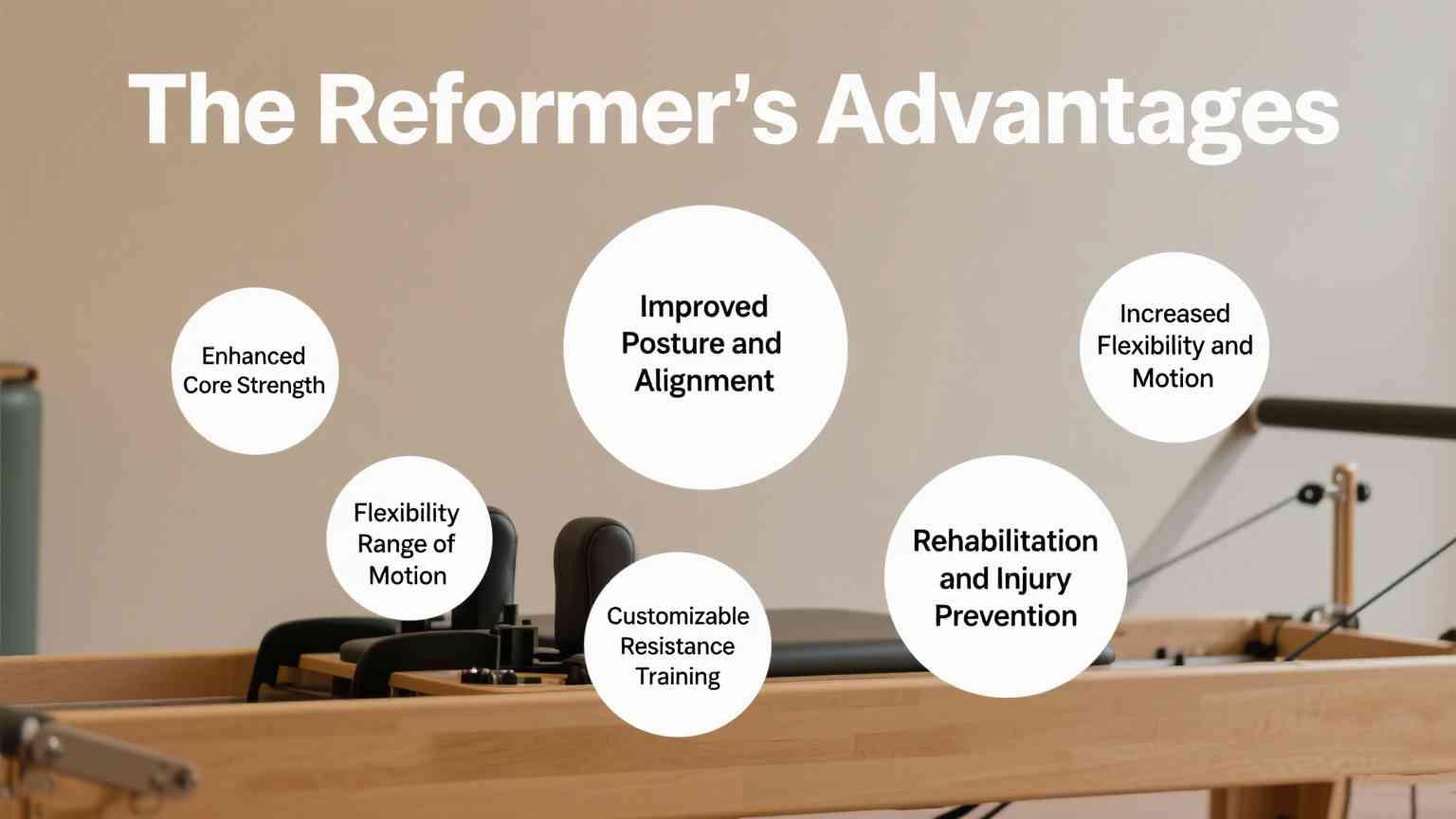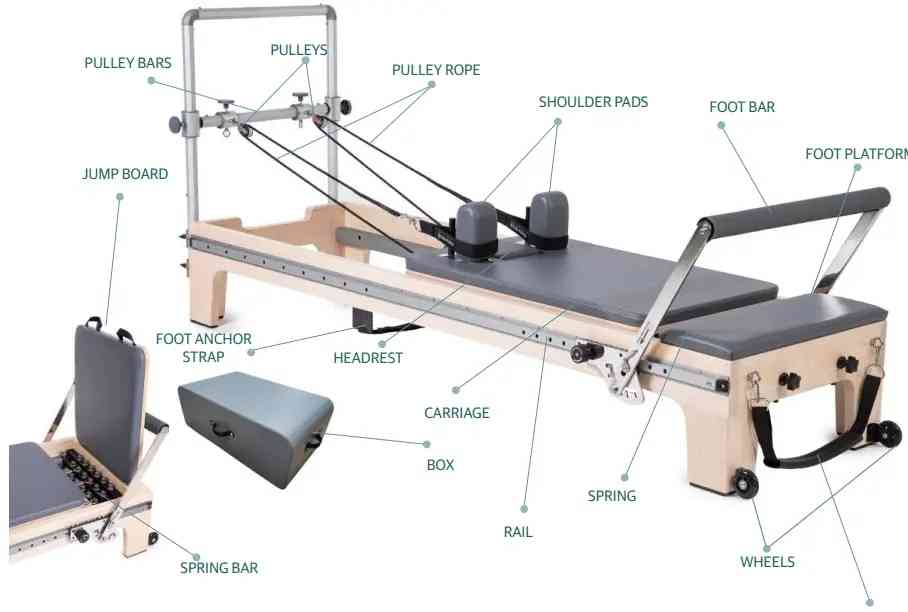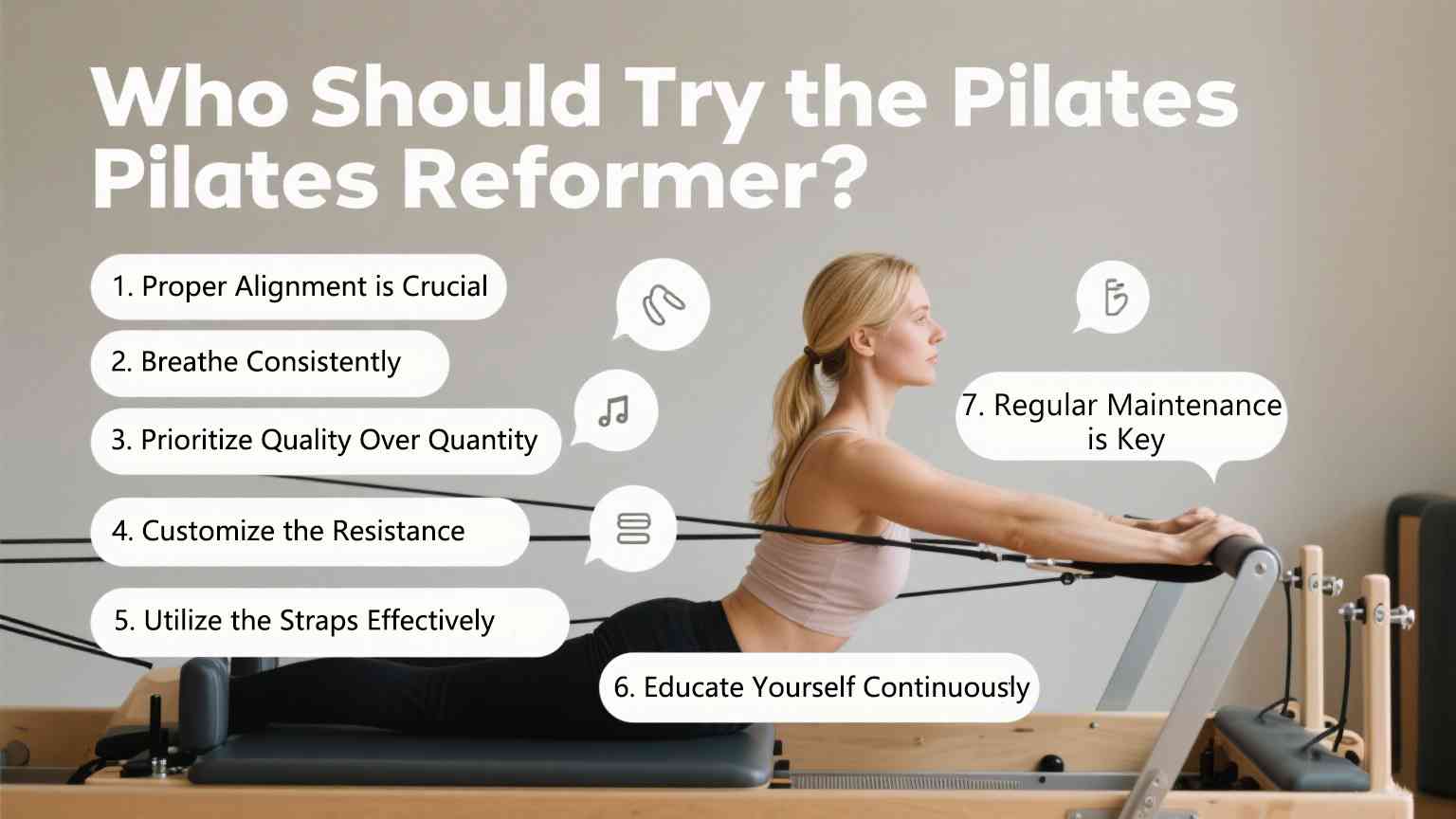Starting on the Pilates Reformer can feel challenging, but with the right guidance and approach, beginners can quickly gain confidence and see results. These 7 tips will help you build strength, improve flexibility, and make the most of every session.
✅ Understanding the Pilates Reformer: Its Origin and Benefits
The Historical Roots
The Pilates Reformer was developed by Joseph Pilates in the early 20th century as part of his method to improve physical strength, flexibility, and rehabilitation. Originally designed to help injured soldiers recover after World War I, the Reformer evolved into a versatile exercise machine that allows precise control of movement, resistance, and alignment. Over time, it became a staple in both fitness studios and rehabilitation clinics worldwide.
The Reformer's Advantages
The Reformer offers a wide range of benefits beyond traditional mat Pilates:
* Enhanced Core Strength: Its moving carriage and adjustable resistance engage deep stabilizing muscles.
* Improved Posture and Alignment: Exercises emphasize proper spinal alignment and muscular balance.
* Increased Flexibility and Range of Motion: Dynamic stretches with resistance improve mobility safely.
* Customizable Resistance Training: Adjustable springs allow workouts to suit beginners or advanced practitioners.
* Rehabilitation and Injury Prevention: Low-impact exercises help rebuild strength and prevent future injuries while promoting safe, controlled movements.

✅ Components of a Pilates Reformer
Understanding the different parts of a Pilates Reformer is key to using it effectively and safely. Each component—from the sliding carriage to the adjustable springs and straps—plays a specific role in providing resistance, support, and versatility. Familiarity with these parts helps you perform exercises correctly and get the most out of your workout.
1. Frame
The sturdy structure that holds all other parts together. It can be made of wood, aluminum, or steel, providing stability and durability.
2. Sliding Carriage
The platform on which you lie, sit, or kneel. It moves smoothly along rails, allowing exercises with controlled motion and resistance.
3. Springs
Attached beneath the carriage, these provide adjustable resistance. Different colors or tensions correspond to varying levels of difficulty, making the Reformer adaptable for all fitness levels.
4. Footbar
A padded bar at one end of the machine used to push or press against during exercises. Its height and angle can often be adjusted to accommodate different movements.

5. Shoulder Blocks
These prevent the carriage from sliding too far and provide support for the shoulders during lying exercises.
6. Straps and Handles
Attached to pulleys, the straps allow pulling or pushing movements with arms or legs, adding versatility to exercises and engaging different muscle groups.
7. Headrest and Shoulder Pads
These provide comfort and proper alignment during exercises, especially for beginners or those recovering from injury.
8. Optional Accessories
Some Reformers include attachments like jump boards, box platforms, or extension bars for additional exercise variations.
We are committed to delivering exceptional support and
top-tier service whenever you need it!
✅ Top Tips to Optimize Your Reformer Experience
Maximizing the benefits of your Pilates Reformer requires more than just going through the motions. By focusing on proper form, mindful breathing, and smart use of the equipment, you can enhance strength, flexibility, and overall body awareness. The following tips will help you get the most out of every session, whether you're a beginner or an experienced practitioner.
1. Proper Alignment is Crucial
Maintaining correct alignment throughout every exercise is essential to maximize effectiveness and reduce the risk of injury. Focus on keeping your spine neutral, shoulders relaxed, and pelvis stable. Misalignment can shift the workload to unintended muscles, reducing benefits and potentially causing strain over time. Consider using a mirror or asking an instructor for feedback to ensure your posture is consistently correct.
2. Breathe Consistently
Breathing is more than just oxygen intake—it's a fundamental part of Pilates. Coordinate each movement with your breath: exhale during exertion and inhale during release. This rhythm not only stabilizes the core but also enhances concentration, promotes relaxation, and supports proper muscle engagement, making your workout more efficient and mindful.
3. Prioritize Quality Over Quantity
It's tempting to increase repetitions or speed, but performing exercises slowly and deliberately ensures each muscle is fully engaged. Focus on precision, control, and the quality of every movement. Over time, this approach builds strength, flexibility, and endurance more effectively than rushing through a high-volume session.
4. Customize the Resistance
The Reformer's springs allow you to adjust resistance for each exercise. Beginners should start with lighter springs to develop proper form and prevent strain, while intermediate and advanced users can increase resistance to challenge strength, stability, and endurance. Adjust resistance gradually, listen to your body, and avoid sudden increases that could compromise technique.

5. Utilize the Straps Effectively
Straps are versatile tools that add resistance, support, and range of motion to your exercises. Use them to work different muscle groups, assist with balance, or increase intensity. Proper strap use engages both the primary muscles and stabilizers, creating a full-body workout. Always ensure straps are securely fastened and maintain smooth, controlled movements.
6. Educate Yourself Continuously
Pilates is a skill-based practice. Continuously learning new exercises, proper techniques, and modifications can enhance your results and reduce the risk of injury. Attend workshops, take classes, watch tutorials, and consult certified instructors to expand your knowledge. Staying informed allows you to adapt exercises to your body's needs and progress safely.
7. Regular Maintenance is Key
A well-maintained Reformer ensures smooth, safe operation and extends the lifespan of your machine. Regularly inspect springs, straps, screws, and the carriage for wear or damage. Lubricate moving parts as recommended by the manufacturer and replace worn components promptly. A reliable machine ensures a consistent, effective, and injury-free workout every session.
✅ Conclusion
By focusing on proper form, mindful breathing, and gradual progression, beginners can safely master the Reformer and enjoy its full range of benefits. Consistency, patience, and awareness are key to turning each workout into a rewarding experience.

Talk To Our Experts
Connect with an NQ expert to discuss your product needs
and get started on your project.
✅ Common Questions About Pilates Reformer
1. Do I need prior experience to start Reformer Pilates?
No, beginners can start Reformer Pilates without prior experience. The machine's adjustable resistance and supportive structure make it accessible for all fitness levels. However, it's recommended to begin with a beginner-friendly class or private session to learn proper form and technique. Many studios offer introductory classes tailored for newcomers.
2. How often should I practice Reformer Pilates as a beginner?
Starting with 1–2 sessions per week is advisable. This frequency allows your body to adapt and build strength without overexertion. As you become more comfortable and your body adapts, you can gradually increase to 2–3 sessions per week.
3. Can I practice Reformer Pilates at home?
Yes, practicing at home is possible with the right equipment and guidance. Affordable at-home Reformer machines are available, such as the Nexace and Lintry models, which offer quality features suitable for home use. However, it's crucial to have foundational knowledge and proper instruction to ensure safety and effectiveness.
4. How do I choose the appropriate resistance on the Reformer?
Beginners should start with lighter spring resistance to focus on mastering form and control. As strength and confidence build, resistance can be gradually increased. It's essential to prioritize control and alignment over intensity, especially in the initial stages.
5. What should I focus on to maximize benefits as a beginner?
Concentrate on the six core Pilates principles: breath, concentration, control, precision, center, and flow. Starting with breath awareness is fundamental, as it enhances core engagement and movement efficiency. Incorporating these principles into your practice promotes a deeper mind-body connection and improves overall performance.
Post time: Sep-01-2025
